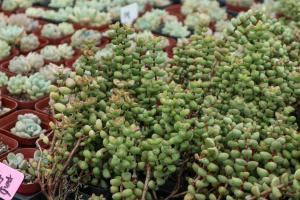How to Care for Cilantro Plants in Pots
Cilantro, also known as coriander, is a herb that is commonly used in many dishes for its unique flavor and aroma. It is easy to grow cilantro in pots, making it a great choice for home gardeners who want to have a fresh supply of this herb at their fingertips. However, to ensure that your cilantro plants stay healthy and productive, it is important to give them proper care. Here are some tips on how to care for cilantro plants in pots:
Choosing the Right Pot
The first step to caring for cilantro plants in pots is to choose the right container. Cilantro plants prefer well-drained soil, so be sure to choose a pot with drainage holes at the bottom. The container should also be deep enough to accommodate the roots of the plant, but not too large as cilantro does not like to be overcrowded. A pot that is 10-12 inches wide and 8-10 inches deep is a good size for growing cilantro.
Soil and Watering
Cilantro plants require well-drained soil that is rich in organic matter. You can use a good quality potting soil or create your own mix by combining equal parts of compost, peat moss, and vermiculite. Water your cilantro plant regularly but make sure not to overwater it as this can lead to root rot. The soil should be moist but not soaking wet. Allow the top layer of soil to dry out before watering again.
Sunlight and Temperature
Cilantro plants thrive in cool weather and require plenty of sunlight to grow well. Place your pot in a location that receives at least 6 hours of direct sunlight per day. If you live in a hot and dry climate, consider providing shade during the hottest part of the day to prevent your cilantro plants from wilting. Cilantro can tolerate temperatures between 50-80°F, so make sure to protect your plants from extreme temperatures by moving them indoors during the winter months.
Fertilization
Cilantro plants do not require heavy fertilization but can benefit from an occasional dose of nutrients. You can use a balanced fertilizer that is designed for herbs, or you can make your own by mixing 1 tablespoon of fish emulsion or worm castings with a gallon of water. Apply the fertilizer every 4-6 weeks, following the instructions on the package or the recipe that you are using.
Pest and Diseases
Cilantro plants are generally healthy and do not suffer from many pests or diseases. However, they can be affected by aphids, spider mites, and whiteflies. To prevent these pests, keep your plants properly watered and fertilized and avoid overcrowding. If you do notice an infestation, treat your plants with an insecticidal soap or neem oil. Cilantro plants can also be affected by fungal diseases, such as powdery mildew or damping off. To prevent these diseases, keep your plants well-ventilated and avoid overwatering.
By following these simple tips, you can ensure that your cilantro plants stay healthy and productive, providing you with fresh herbs to use in your favorite dishes all year round.

 how many times do yo...
how many times do yo... how many planted tre...
how many planted tre... how many pine trees ...
how many pine trees ... how many pecan trees...
how many pecan trees... how many plants comp...
how many plants comp... how many plants can ...
how many plants can ... how many plants and ...
how many plants and ... how many pepper plan...
how many pepper plan...































